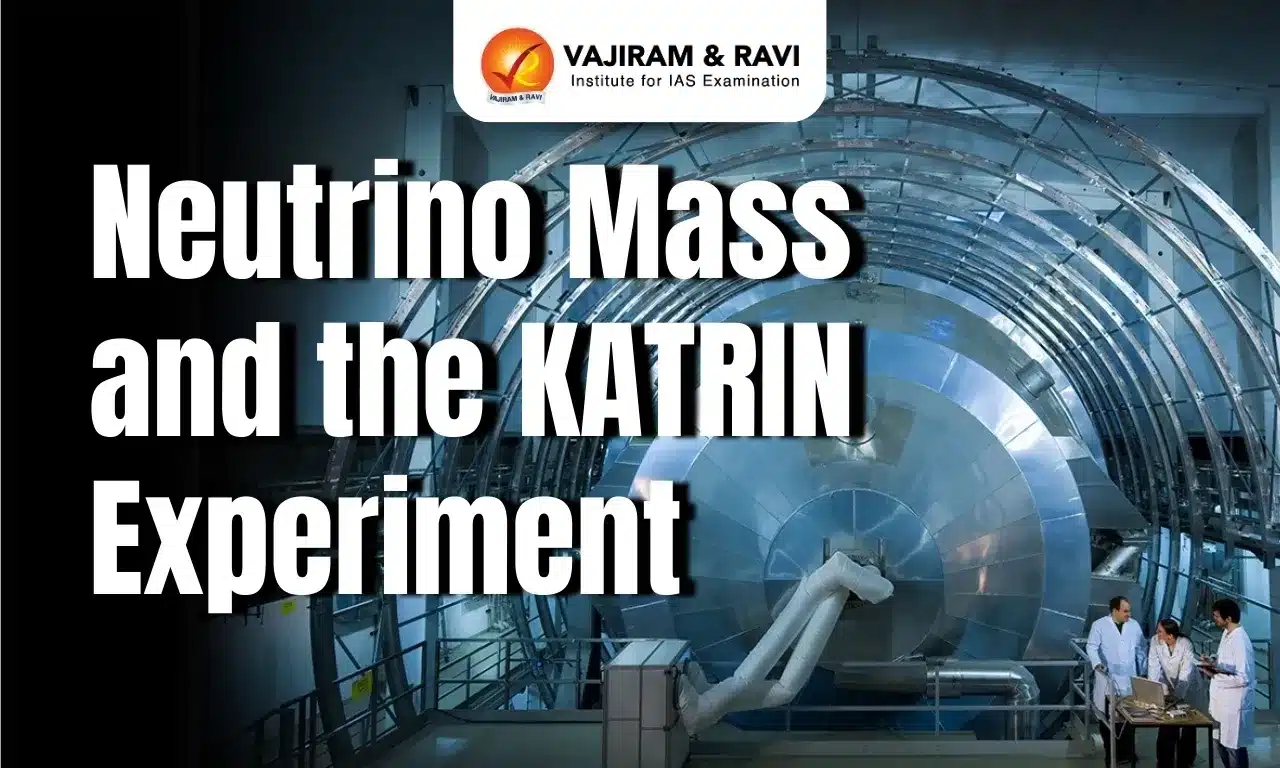Neutrino Mass and the KATRIN Experiment Latest News
The latest update from the KATRIN experiment has brought significant advancement in particle physics.
What are Neutrinos?
- Neutrinos are electrically neutral subatomic particles that are produced in processes like radioactive decay and nuclear reactions, including those occurring in the sun and stars.
- They are one of the fundamental particles in the Standard Model of particle physics, but their mass remains unknown.
- Unlike other fundamental particles, neutrinos are extremely lightweight, with masses less than a millionth that of an electron.
What is the KATRIN Experiment?
- KATRIN stands for Karlsruhe Tritium Neutrino experiment, and it is located in Karlsruhe, Germany.
- Its primary aim is to precisely measure the mass of the electron antineutrino, a type of neutrino produced in beta decay.
- The experiment focuses on studying the decay of tritium, a radioactive isotope of hydrogen, which emits both an electron and an electron antineutrino.
- The energy of the emitted electron is affected by the mass of the neutrino — hence, measuring electron energies helps infer the upper limit of the neutrino’s mass.
Recent Findings
- In its latest analysis, KATRIN has reduced the upper limit of the neutrino mass to less than 0.45 electron volts (eV).
- This is a significant improvement over its earlier result and represents a nearly 50% reduction in the previously estimated maximum value.
- The data is based on the precise measurement of energies from 36 million electrons produced in tritium decay.
Neutrino Mass and the KATRIN Experiment FAQs
Q1. What are neutrinos?
Ans. Electrically neutral subatomic particles with minuscule mass, categorized into three “flavors”: electron, muon, and tau.
Q2. Why is measuring neutrino mass crucial?
Ans. It impacts cosmology (dark matter/dark energy) and particle physics (Beyond Standard Model theories).
Q3. How does KATRIN work?
Ans. The Karlsruhe Tritium Neutrino Experiment (Germany) measures tritium beta decay to determine neutrino mass, achieving a sensitivity of 0.2 eV/c².
Q4. How is India contributing to neutrino research?
Ans. Through the proposed India-based Neutrino Observatory (INO), focusing on atmospheric neutrino studies in Tamil Nadu.
Source: SCN
Last updated on December, 2025
→ Check out the latest UPSC Syllabus 2026 here.
→ Join Vajiram & Ravi’s Interview Guidance Programme for expert help to crack your final UPSC stage.
→ UPSC Mains Result 2025 is now out.
→ UPSC Notification 2026 is scheduled to be released on January 14, 2026.
→ UPSC Calendar 2026 is released on 15th May, 2025.
→ The UPSC Vacancy 2025 were released 1129, out of which 979 were for UPSC CSE and remaining 150 are for UPSC IFoS.
→ UPSC Prelims 2026 will be conducted on 24th May, 2026 & UPSC Mains 2026 will be conducted on 21st August 2026.
→ The UPSC Selection Process is of 3 stages-Prelims, Mains and Interview.
→ UPSC Result 2024 is released with latest UPSC Marksheet 2024. Check Now!
→ UPSC Prelims Result 2025 is out now for the CSE held on 25 May 2025.
→ UPSC Toppers List 2024 is released now. Shakti Dubey is UPSC AIR 1 2024 Topper.
→ UPSC Prelims Question Paper 2025 and Unofficial Prelims Answer Key 2025 are available now.
→ UPSC Mains Question Paper 2025 is out for Essay, GS 1, 2, 3 & GS 4.
→ UPSC Mains Indian Language Question Paper 2025 is now out.
→ UPSC Mains Optional Question Paper 2025 is now out.
→ Also check Best IAS Coaching in Delhi

















